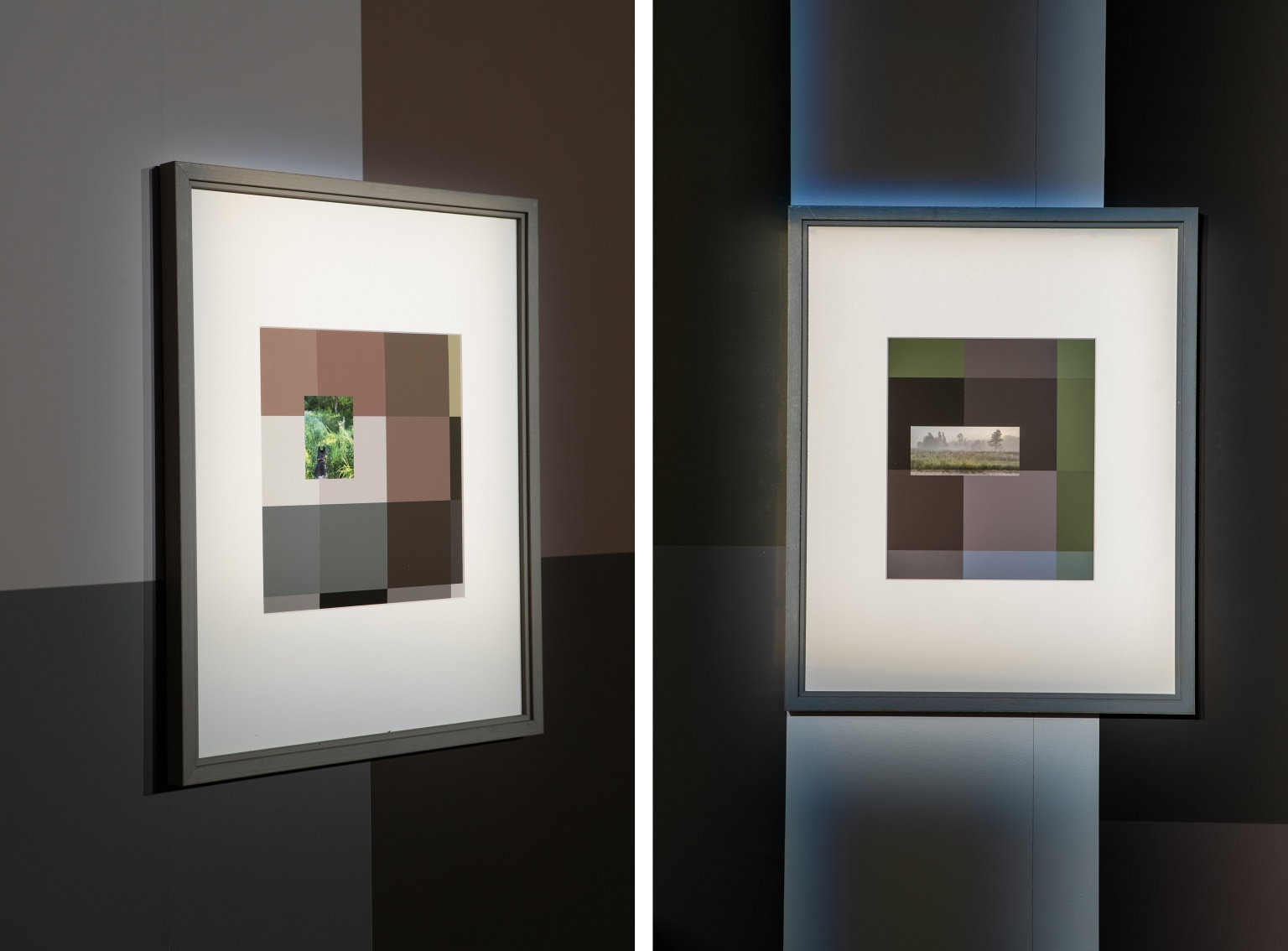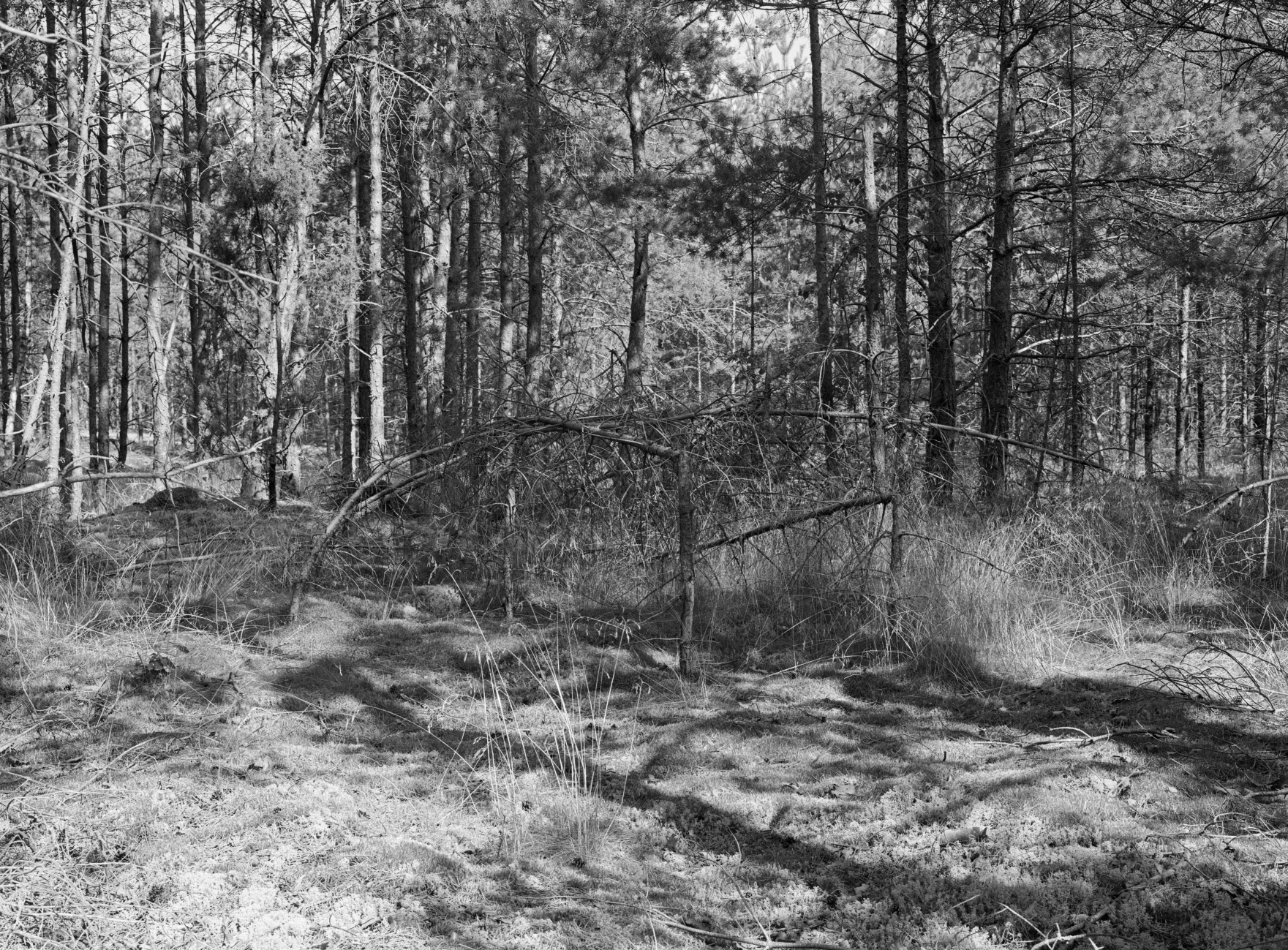Enjoy the now
Project & solo exhibition
I trudge through a thick forest. I climb over fallen trees, of which there are plenty in this area. No one seems to be clearing the forest here. A glitchy GPS signal slowly leads me towards Belarus. I stop when I reach a clearing. I cannot proceed further and reach the destination – one of several migrant camps situated at the border. I can see the guard towers of the Border Guard, but what catches my eye even more, is the gleaming barrier in the sunlit landscape: from where I stand, the concertina looks almost like a mirage. It glows in the autumnal but still warm midday sun and seems to have an unearthly shimmer. I stand at a distance. My border permit (issued by the Varėna Frontier of the State Border Guard Service; purpose – “mushroom picking”) – which is about to be checked by two young border guards – explicitly forbids taking photographs of “foreigners who have illegally entered the territory of Lithuania during the state of emergency”. So I walk around with a basket for mushrooms, which I hardly find, and take pictures not of people, but of the subtle signs of their presence in the forests: laid-out grass, litter left behind, someone’s socks, broken branches.


According to a study on subjective security perception conducted in 2017 by the Lithuanian Social Research Centre, “distant regions and social processes taking place there cause serious concern for the Lithuanian population”. This anxiety “is usually based on a vision of threat constructed by the mass media”. This construction was also evident during the summer of 2021, when, in the wake of a migrant crisis, the image of the migrants was shaped by widely publicised photographs by the State Border Guard Service. The impact of these photographs was amplified by the fact that for some time they were the only visual witnesses to the events, and in them, the faces of the migrants were concealed by pixel blocks – a common practice of anonymisation that the SBGS applies to smugglers under arrest. Pixelated faces abstract real people, their experiences and stories. Pixelation in photographs was accompanied by other visual practices of intimidation: lined up migrants, their hands behind their heads, etc. This illustrates the narrative that has been consistently suggested: that migrants – indiscriminately – are equal to criminals who pose a threat.


With portraits of migrants, their stories and experiences pushed out of the public discourse and turned into meaningless statistics (reduced to a changing number in a series of headlines “X more migrants turned away at the border with Belarus”), there is also an attempt to remove from the public eye the actions taken by the border control institutions. The dark side of the pushback practice is also reflected in the position of the Ministry of the Interior – “no one is to see the work of the officers at the border between Lithuania and Belarus”. This is reminiscent of the discourse highlighted by visual culture theorist Nicholas Mirzoeff, which is more characteristic of authoritarian regimes: “Move on, there is nothing to see here”. When the concertina gleams in the sun once again, I think to myself: I want to be here because I am unwanted.

From series Out of Sight, Out of Mind (2021-)

Former migrant campsite, Lithuanian forest, 2022

Concertina, border zone with Belarus, 2022
Enjoy the Now was a solo exhibition at Prospektas gallery in Vilnius. The installation featured works from Out of Sight, Out of Mind (2021-) series as well as AI-generated portraits, photographs from former impromptu migrant camps in Lithuanian forest and found objects.
Thanks to: Mantautas Šulskus & Sienos grupė, Paul Herbst
Illustration: Joleet Saadon
Exhibition graphic design: Jūratė Gačionytė
Image preparation assistance: Aaro Veiderpass, Karolis Dovidavičius
Documentation: Laurynas Skeisgiela
Press:
(LT) Perspektyva | LRT
(LT) Ištustėję peizažai: trys fotografijų parodos Vilniuje | Marija Martinaitytė




